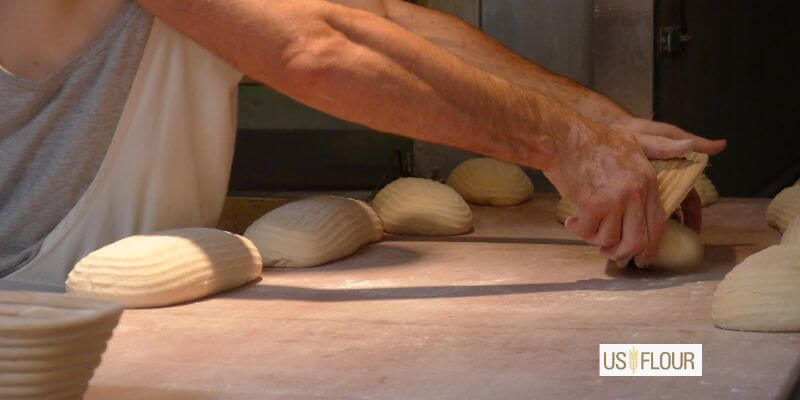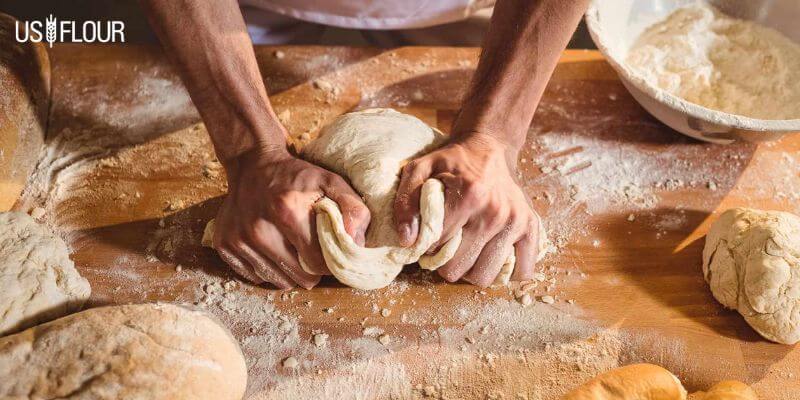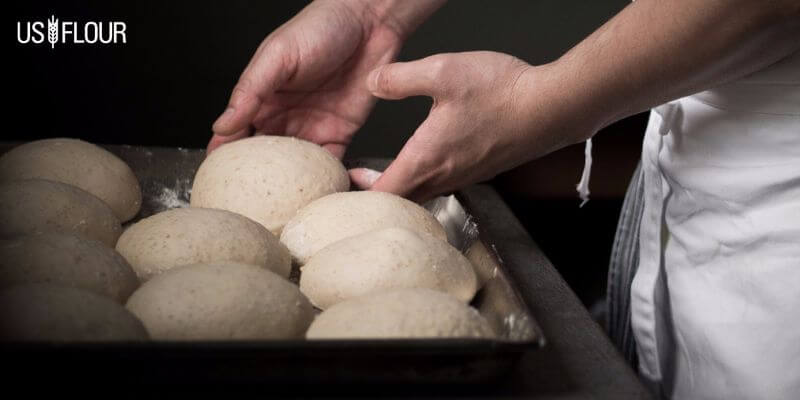How is clear flour bread prepared?

If you are a producer of baked goods, you will know that there are many different types of flour. Also, it should be satisfied that the type of flour you use affects the outcome of your baked goods, such as biscuits, waffles, and bread. The difference in final products is because of the contents of the flour. Clear flour is one of those types of flour that will give you a unique product.
What is clear flour?
There are leftovers after high-quality flour is extracted from wheat. Clear flour is what is left over. Clear flour is darker in color, despite its name. It also has a stronger taste and is coarser than pastry flour. Clear flour is commonly used in rye bread and whole-grain foods because of its grayish color.
The protein, ash, and bran content of clear flour are higher than that of plain flour, making it more nutritious. However, although it is higher in protein, the quality of the gluten formed from clear flour is lower. It also performs poorly when compared to bread flour.
Additionally, clear flour has a more rob ust flavor and is much darker than patent flour because it is made from the aleurone layer and the outermost layers of the endosperm. Clear flour is the least expensive of all commercial flours.
Commercial production of clear flour
There are four basic edible stream categories of milled wheat flour. Quality is used to define these streams and the flour obtained after patenting it:
- First clear flour: The mill’s lower-quality flour is the first batch of clear flour. The ash in it is in the 0.8–0.9% range. The first clear flour has baking qualities, and the flour yield is about 15% from the batch. It is commonly used in pumpernickel and rye bread.
- Second clear flour: The second clear flour has about 0.75% ash and is of poor quality for baking. Its flour yield is about 2% of the batch. Second, clear flour is often used in animal feeds and pet food.
Clear flour has a gray hue and is used to make rye and wheat bread, where its gray undertone can be concealed. Combining first-clear flour with patent flour gives straight flour. Straight flour is popular in France, and patent flour is commonly used in North America.
How is clear flour bread prepared?
Since the second clear flour is of poor quality for baking, it is evident that the first clear flour is used to make bread. Like every baked good, your hands are the most important thing you need to prepare plain flour bread. Although there are mixers and technologies that you can use, you get to understand what baking is all about when you make use of your hands.
Below is how clear flour bread is prepared:
1. Making sourdough starter
Cultivating wild yeast and bacteria in water and clear flour is a sourdough starter. You do not need salt to create a sourdough starter, as bacteria and wild yeast are the only two required ingredients. The sourdough starter takes up to two weeks to build up a collection of wild yeast and bacteria.
After about 48 hours, you want to inoculate fresh flour and water with some of your initial starters. You can leave it for as long as you like, but you may build up harmful bacteria if you do.
2. Check if the yeast you are using is active
Mix it with clear flour and water to know if the yeast is active. You should notice activity in the next couple of hours. If the yeast is alive, you should have some bubbles.
Its smell would be pretty sour if the yeast went terribly. Although yeast does have a slightly funky smell, if it has spread beyond that, it can be noticeable.
3. Knead the dough

Creating a gluten structure is done by mixing the dough or kneading it. Kneading the dough gives it more strength and captures gas bubbles produced by the fermentation. But, of course, you will have a flat loaf in the absence of that strength.
During kneading, you can use your hands to press your palms into a tabletop and then collect the dough. Again, incorporating air into the dough ensures gluten development.
4. Let the bread rise properly

Most bakers like to poke their fingers in the dough when it comes to the final proofing. If the loaf springs back, it still needs to be fully proofed when it comes to the final proofing step. If the loaf springs back, it still needs to be fully proofed. You’ve gone too far if your finger enters the loaf and almost gasses it.
Typically, you want your finger poke only slightly to spring back and not completely collapse. You should also check the volume in the basket or pan where your loaf is. However, this can be misleading in some cases.
5. Bake our straightforward flour bread
Baking your straightforward flour bread is the final part. It can be tricky to know if it is well-baked, but there are some techniques to help you. Your white-flour bread is baked correctly when you tap the bottom of the loaf and hear almost a hollow sound.
Sticking to the thermometer is another way of knowing if your clear-flour bread is well prepared. Typically, you want the temperature inside to be between 191 and 200 degrees Fahrenheit.
Conclusion
Using the apparent flour fraction may improve the performance of some baked goods. For example, in low-fat and sugar applications, using clear flour will create biscuits that are longer, easier to break, and denser than those made with patent flour.
 Power to The Bakers.
Power to The Bakers.